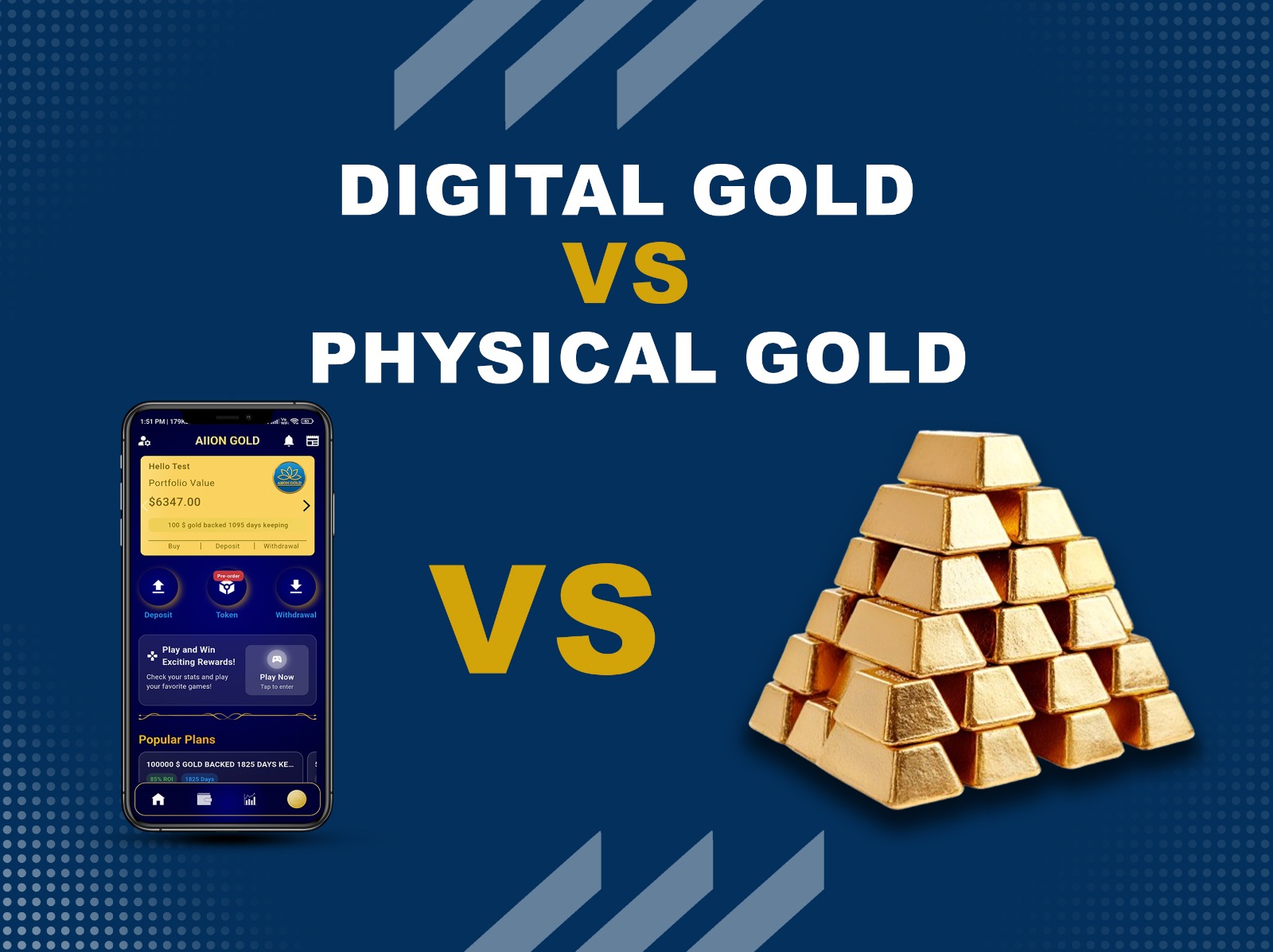Digital Gold vs Physical Gold: Detailed Comparison, Benefits, Risks & Investor Advice


Gold has long been a symbol of wealth, security, and legacy. But in today’s digital-first era, investors now have a powerful alternative to traditional gold: Digital Gold. While both forms serve as a store of value, they differ significantly in how they are bought, held, and managed. If you're wondering which is the better investment — digital gold or physical gold — this blog gives you a full breakdown and actionable advice from a smart investor’s perspective.
What is Digital Gold?
Digital gold is a modern way to invest in real 24K gold online. You buy gold through trusted apps or websites, and that gold is stored in your name by a custodian in insured vaults. You can buy as little as ₹10 worth of gold and track your holdings in real-time.
Physical gold refers to the traditional form of gold — jewellery, coins, or bars — which you can touch, store, gift, or wear. It’s often bought from jewellers or banks and stored at home or in lockers.
Detailed Comparison: Digital Gold vs Physical Gold
Benefits of Digital Gold: Smart, Safe, and Simple
Buy even 0.01 gram of gold — perfect for students, young investors, or SIP-style savings.
Invest or redeem anytime, even on holidays, with just a smartphone.
Want to wear your investment? Convert your digital gold into jewellery or coins easily.
Digital gold is perfect for long-term wealth creation and festive gifts — quick, clean, and meaningful.
Some platforms allow you to start a monthly gold savings plan, similar to a mutual fund SIP.
Downsides of Physical Gold: Why It’s Losing Popularity
Jewellers often charge making fees (5–20%) and deduct for impurities when you sell.
Not practical to buy gold jewellery or bars every month for ₹500–₹1000.
Bank lockers involve rental fees. Storing at home invites risk.
No app or digital dashboard — hard to track how much gold you really have unless manually recorded.
Risks with Digital Gold — And How to Avoid Them
Though digital gold is convenient, you should be aware of certain risks and how to manage them:
Always use trusted apps like PhonePe, Google Pay, Paytm, and providers like MMTC-PAMP, SafeGold, or Augmont. These are linked to SEBI-approved custodians.
Digital gold is not regulated by SEBI or RBI yet. However, reputed providers follow best practices and regular audits.
Some platforms charge a small fee when you redeem physical coins or bars. Check terms in advance.
Expert Investor Tips: How to Maximize Profits
Go with providers who:
Don’t go all-in on one type of gold. Use digital gold for liquidity and growth, and physical gold for emotional or family-based purposes.
Digital gold is ideal for:
Convertibility: Digital Gold Can Become Physical Gold
Most digital gold platforms allow you to redeem your holdings into coins or bars. These can be:
This makes digital gold a hybrid — combining the convenience of online investing with the tangibility of physical gold when you need it.
Conclusion: Digital Gold or Physical Gold — Which Should You Choose?
If you want convenience, flexibility, and easy tracking, go for Digital Gold.
If you value tradition, emotion, and want to wear your wealth, keep some Physical Gold.
But from a profitability and security point of view, Digital Gold is the smarter choice for modern investors.
Final Advice From a Human Investor’s Point of View:
As a responsible investor, here’s what we suggest:
Your gold should work for you — not the other way around. Go digital. Go smart. Go secure